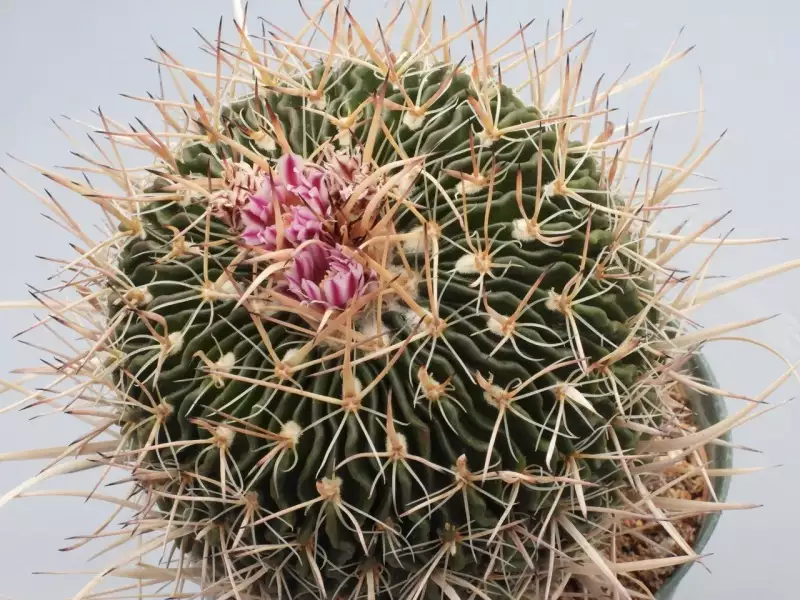
|

|
Echinofossulocactus xiphacanthus MG316.75 10/23/21
The "xiphacanthus" is botanical Greco-Latin for "gladiolus-like spines." I don't think that there is enough alcohol in the world to help me to see the gladiolus connection. Doris used to grow gladioli in times past at other places we lived.
The plant looks to me like another member of the various Echinofossulocacti whose correct name and relationship to the whole of the genus entirely escapes me. And I'm not the only one of us hobby-people with this problem. Speaking a fundamentally different language from English doesn't get one to any comfortable solution. Cactus nuts all over the world puzzle at the correct ordering of this genus If someone ever tries to make sense of it, that person will either become a god in evolutionary biology, or, more likely, go crazy.
No matter what it is, it's a pretty plant. I include it to represent the entire genus that's been overwintering (? what's "winter?") and sporadically flowering in one of my cloches. They began to flower this fall in November or so. You have a nice example here of why this species is so wonderful, namely, the wavy and sharp ribs, which caused the genus to be named Echinofossulocacti - spiny wavy cacti with grooves. For some reason, there is a group of English taxonomists who hate this name, to the point that they lawyered the system of cactus naming to disallow the genus name. They changed it to "Stenocactus." This translates to "narrow cactus." I can't imagine a stupider and more useless thing to do. Wavy cactus kind of gets the thing defined. Narrow cactus? (I happen to be contemplating an unbelievably complicated operation because of my extreme lumbar spinal stenosis, caused by getting too old and having the wrong form of arthritis. A poor choice of parents may also be in play. I'd rather not be reminded of my spinal problem when looking at a cactus name. Old age has intensified my tendency to crotchety-ness.) (04/32)